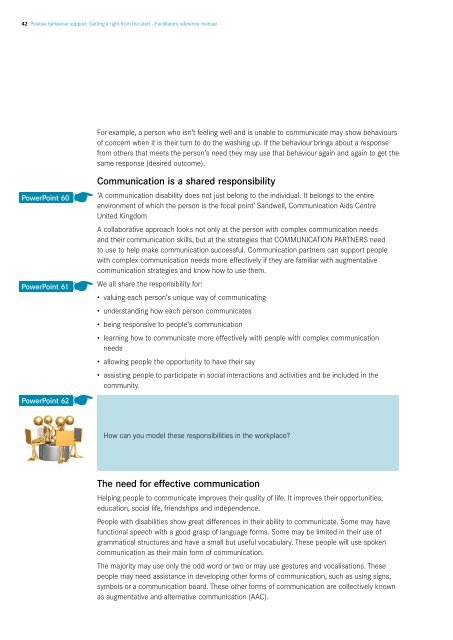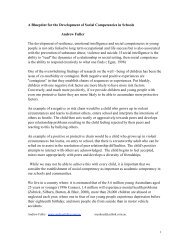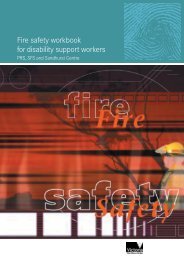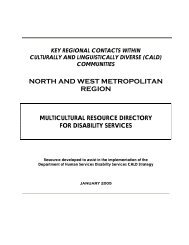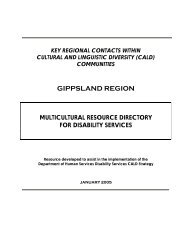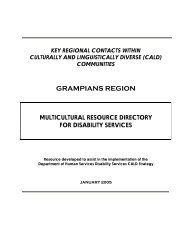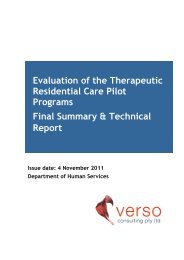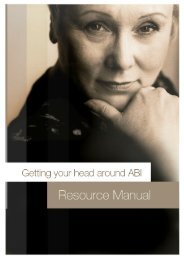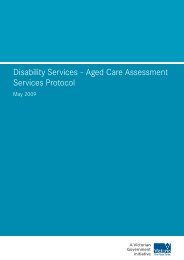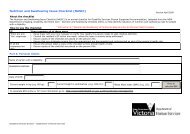Positive Behaviour Support - Department of Human Services - Vic ...
Positive Behaviour Support - Department of Human Services - Vic ...
Positive Behaviour Support - Department of Human Services - Vic ...
Create successful ePaper yourself
Turn your PDF publications into a flip-book with our unique Google optimized e-Paper software.
42 <strong>Positive</strong> behaviour support: Getting it right from the start - Facilitators reference manual<br />
PowerPoint 62*<br />
For example, a person who isn’t feeling well and is unable to communicate may show behaviours<br />
<strong>of</strong> concern when it is their turn to do the washing up. If the behaviour brings about a response<br />
from others that meets the person’s need they may use that behaviour again and again to get the<br />
same response (desired outcome).<br />
Communication is a shared responsibility<br />
PowerPoint 60*<br />
‘A communication disability does not just belong to the individual. It belongs to the entire<br />
environment <strong>of</strong> which the person is the focal point’ Sandwell, Communication Aids Centre<br />
United Kingdom<br />
A collaborative approach looks not only at the person with complex communication needs<br />
and their communication skills, but at the strategies that COMMUNICATION PARTNERS need<br />
to use to help make communication successful. Communication partners can support people<br />
with complex communication needs more effectively if they are familiar with augmentative<br />
communication strategies and know how to use them.<br />
PowerPoint 61 We all share the responsibility for:<br />
*<br />
• valuing each person’s unique way <strong>of</strong> communicating<br />
• understanding how each person communicates<br />
• being responsive to people’s communication<br />
• learning how to communicate more effectively with people with complex communication<br />
needs<br />
• allowing people the opportunity to have their say<br />
• assisting people to participate in social interactions and activities and be included in the<br />
community.<br />
How can you model these responsibilities in the workplace?<br />
The need for effective communication<br />
Helping people to communicate improves their quality <strong>of</strong> life. It improves their opportunities,<br />
education, social life, friendships and independence.<br />
People with disabilities show great differences in their ability to communicate. Some may have<br />
functional speech with a good grasp <strong>of</strong> language forms. Some may be limited in their use <strong>of</strong><br />
grammatical structures and have a small but useful vocabulary. These people will use spoken<br />
communication as their main form <strong>of</strong> communication.<br />
The majority may use only the odd word or two or may use gestures and vocalisations. These<br />
people may need assistance in developing other forms <strong>of</strong> communication, such as using signs,<br />
symbols or a communication board. These other forms <strong>of</strong> communication are collectively known<br />
as augmentative and alternative communication (AAC).


